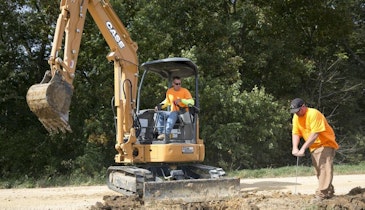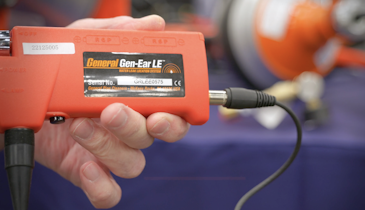Interested in Pumps?
Get Pumps articles, news and videos right in your inbox! Sign up now.
Pumps + Get AlertsWhen Jeff Corbin was hired in June 2016 as the director of maintenance and fleet operations at Mahoney Environmental, the company’s senior-leadership team gave him a mission: Develop a first-class fleet of trucks. Based in Joliet, Illinois, Mahoney Environmental collects millions of gallons of cooking oil a year at restaurants and other businesses nationwide and processes it, primarily for conversion into biodiesel fuel.
Since then, Corbin has done just that by purchasing 17 new eco-friendly, low-emission Freightliner tractor cabs (2017 and 2018 models) that run on biodiesel fuel and eight new vacuum tanker trailers built by Advance Pump & Equipment. The company also switched from leasing trucks on seven-year contracts to outright purchases and plans on replacing 1/5 of its fleet every year, Corbin says. The tankers are expected to stay on the road for 20 years.
“The senior leaders told me that we already have a world-class company and world-class employees. Now we need a world-class fleet to support them,” Corbin recalls. “The trucks we had were showing their age. … The fleet replacement plan had not been well defined, and we needed to flatten that curve. Maintenance costs were extremely high, and we were experiencing a lot of shop time.”
In addition, the older trucks were hurting the company in an area that too often goes unnoticed: employee-retention efforts. “People don’t think of trucks as a big part of driver-retention efforts,” Corbin says. “It’s one of those ‘soft’ factors that companies don’t always pay attention to.
“But you have to consider the job our drivers do — it’s hard and physically demanding working at restaurants at night, when parking lots are empty and customers aren’t there,” he continues. “And getting guys to do that in older equipment is difficult if they can go down the street and make almost the same wage, not work as hard, and drive newer equipment.”
Corbin talks about the advantages of this fleet-management strategy — and how septic service contractors could benefit from following this approach.
Pumper: What prompted the switch from seven-year leases to purchasing trucks outright?
Corbin: From an economic standpoint, (the long leases) didn’t make sense for our operations … in terms of flexibility and terms of service. Most truck warranties are five years long, which left us with two years’ exposure for maintenance and repairs. We want to mitigate our costs — manage maintenance of the fleet throughout that warranty term and sell the equipment at the end of it while it still has value. That way, we insulate ourselves from most major expenses.
Pumper: What factors did you consider in buying the trucks?
Corbin: We looked at versatility — what would fit our needs and do exactly what we wanted to do. Instead of dealing with multiple suppliers, we wanted to use one manufacturer that could provide us with Class 6, 7 and 8 vehicles. When you can narrow the vendor network, you also narrow down the parts suppliers — and you tend to get better service, too.
We also looked at which (chassis) manufacturers are the leaders in the industry, especially in reliability, as well as what their dealer footprint looks like. Since we have customers in all 50 states and self-service in 22 states, we looked at which company could best support us if there’s an issue with a piece of equipment out on the road. We also looked at cost-of-ownership statistics and resale value.
Pumper: How do the tanker trailers reduce your company’s carbon footprint?
Corbin: Our fleet includes many vacuum trucks that use vane-type vacuum pumps. They’re very good and reliable, but the downside is they have vanes that contact the pump’s housing. So they need to be lubricated during operation with oil that’s automatically fed into the pumps and then exhausted into the atmosphere.
Now we’re switching over to tanker trailers with trilobe blowers (560 cfm) made by National Vacuum Equipment. They cost more upfront, but through reduced maintenance and the fact that they don’t consume oil, we recoup that cost within one or two years, depending on the annual hours of blower operation.
In addition, blowers reduce noise levels by about 40 percent. Again, it all goes back to how to best serve our customers. Since we work in the middle of the night and many restaurants are located in strip malls that back up to residential neighborhoods, it’s important for us to reduce the noise so we don’t disturb our customers’ neighbors.
Pumper: Why did you decide to buy trucks capable of using biodiesel fuel, and does it reduce your fuel costs?
Corbin: Biodiesel is a renewable fuel that is primarily produced from new or used vegetable oils. The majority of the finished product our processing plants produce is sold to the biodiesel manufacturing industry. So it’s important to us, as an environmental company, to support renewable-fuel efforts by being both a collector of those base products used in the manufacturing process as well as an end user of the fuel produced from those base products. Supporting efforts to increase the use of renewable fuels is simply the right thing to do.
As for our fuel expenses, the reduction varies according to the rack price of diesel fuel. Biodiesel has evolved immensely in terms of quality over the last several years and is an environmentally responsible alternative to straight diesel and a huge contributor toward reducing our dependence on fossil fuels. Again, we’re doing it because it’s the right thing to do.
Pumper: How much does a tractor and tanker trailer cost?
Corbin: Each combo is just shy of $250,000, with the tractor cabs taking up about 60 percent of that cost. When we look at what we spend for maintenance on our older equipment and its residual value at the end of its life cycle, the cost is basically a wash. But we also pick up more fuel efficiency and reduce carbon emissions, not to mention the driver-retention piece combined with more vehicle uptime and reliability.
Pumper: Do the new trucks provide a platform for “green” marketing?
Corbin: There’s more marketing value in terms of how our new equipment looks. Used cooking oil and grease aren’t the cleanest products to handle on a daily basis, so it’s quite a task to keep our equipment clean and looking good. But, the new trucks provide a foundation we can build off of from a marketing standpoint. The business we are in is “green” in and of itself, and we are dedicated to supporting the biodiesel industry as a supplier and an end user.
We certainly are proud to have this new equipment on a customer’s parking lot. Not all of our work is done at night. Some places are 24 hours a day, for example. So from time to time, we do encounter our customers’ customers. If those customers walk past our trucks, there’s less odor and the overall appearance of the truck is much better. It’s huge for our customers.
Pumper: What’s the value of employing a five-year replacement cycle for trucks?
Corbin: Warranties typically end after five years, and that’s when the exposure to higher-cost repairs becomes imminent. When you look at maintenance costs in years six and seven, they start to dramatically increase, and the residual value at year five versus years six or seven dramatically drops off, too. So there’s an intersection where maintenance costs increase and the resale value of equipment drops off.
Pumper: How far do you have to go in terms of replacing your fleet of trucks?
Corbin: By the end of 2017, 1/5 of our fleet was replaced. As we move forward, we’re trying to thin out the population of (fixed-tank vacuum) trucks in favor of the tractor-trailer configurations. They’re much more efficient from a capacity standpoint. The larger tanks allow us to make more stops per route and reduce the time spent off-loading, which in turn decreases the amount of miles we run and the fuel we consume.
Furthermore, when you have a pump truck and something goes wrong, the whole unit is down. But if a tractor cab goes down, we have the ability to hook another one up to the trailer and the driver can continue on. The larger tank capacity also allows us to run some overnight routes and increase our (geographic) reach.
Our end goal is to finish replacing all of our trucks within the next four years. Then we’ll come back around and start to replace the trucks we put into service during 2017. Sure, it’s a considerable investment. But when you look at the economics of it — the costs associated with maintaining an older fleet — it just makes sense.
Pumper: Is your fleet-replacement strategy applicable to the septic pumping industry?
Corbin: I think it is applicable. The general practice throughout the industry has been to drive equipment until it can’t operate any more — until it’s beyond repair. A scheduled replacement cycle is not a big industry secret; it’s just not a philosophy that a lot of folks buy into. I think the large upfront investment scares a lot of people.
But when you look at cost of operation and the cost of ownership over the years, you start to realize you’re spending the rough equivalent of a monthly payment anyway, even if you no longer are making a monthly loan payment on the vehicle.







